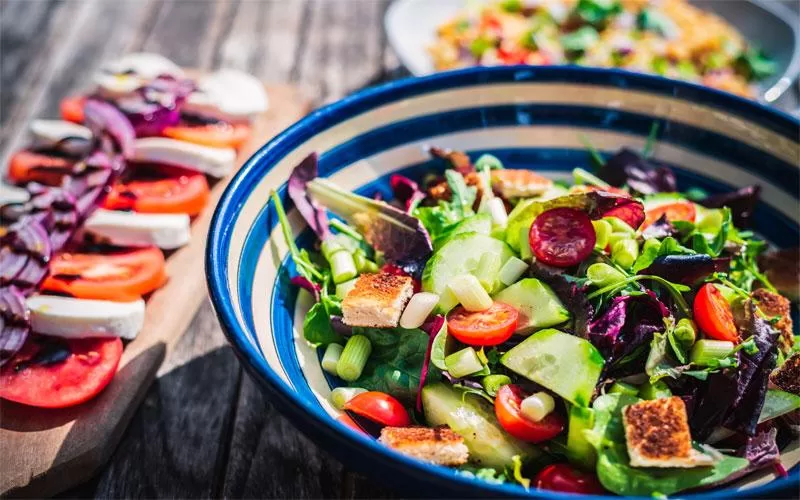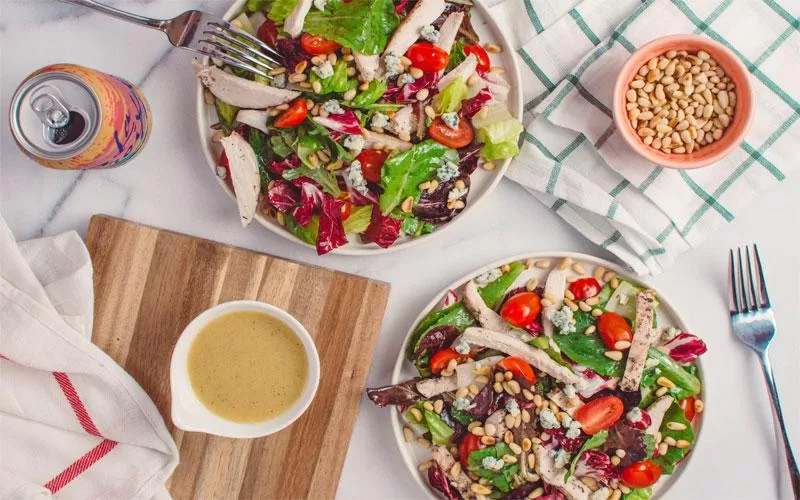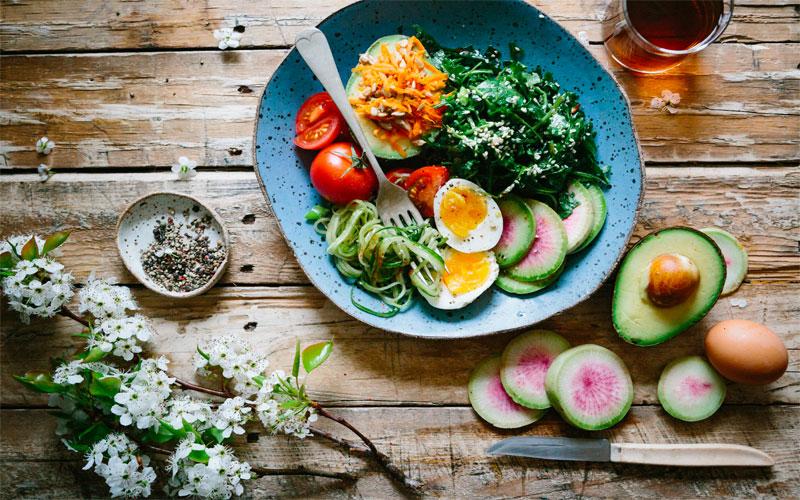
First off, let’s get our heads around what low-carb eating is. It’s not just a diet, it’s a lifestyle change. This approach focuses on reducing carbohydrates, which are found in sugary foods, pasta, and bread. Why? Because cutting down on carbs can lead to weight loss and improved health markers. But it’s not all about saying no to carbs, it’s more about choosing the right ones and pairing them with protein and healthy fats. Living a low-carb lifestyle is a healthy option.
Understanding Carbs: The Good, The Bad & The Tasty
Now, not all carbs are created equal. There are simple carbs, like sugar and refined flour, which are the bad guys. They spike your blood sugar levels and are not your friends if you’re trying to lose weight or manage diabetes. Then there are complex carbs – these are the good guys found in veggies, nuts, and seeds. They digest slowly and keep you full longer.
Complex carbs aren’t just about being the lesser of two evils, they’re actually packed with nutrients. Think of them as the multitaskers of the food world. They bring to the table fiber, vitamins, and minerals that are essential for your overall health. And here’s the kicker: they can help in weight management.
Because they’re digested slower, they keep you feeling full and satisfied, which means you’re less likely to raid the snack drawer an hour after lunch. Plus, they help in maintaining steady blood sugar levels, which means no more of those pesky mid-afternoon crashes. So, when you’re planning your meals, think sweet potatoes instead of fries, quinoa instead of white rice, and whole grains instead of white bread. It’s about making smarter carb choices, not cutting them out completely.

Breakfast: Kicking Off The Day Right
Who said a low-carb lifestyle means skipping breakfast? Not on my watch. Think omelets loaded with veggies, avocado, and cheese. Or how about some Greek yogurt with a sprinkle of nuts and a dash of cinnamon? You can even have pancakes – just swap out the flour for almond or coconut flour, and you’re all set.
But wait, there’s more to the low-carb breakfast than just swapping ingredients. It’s about reimagining the first meal of the day. How about a smoothie made with spinach, a scoop of protein powder, almond milk, and a handful of berries? It’s refreshing, filling, and oh-so-nutritious. Or, for those who like it savory, why not try a breakfast bowl with scrambled eggs, diced tomatoes, spinach, and a sprinkle of feta cheese? These breakfast options are not only low in carbs but also high in protein and healthy fats, setting you up for a day of sustained energy and no hunger pangs.
Plus, they’re incredibly versatile – mix and match your favorite ingredients to keep things interesting. Remember, breakfast is the foundation of your day, so make it count with choices that are as delicious as they are healthy.
Lunch: Keeping It Fresh & Exciting
Lunch doesn’t have to be a sad salad. How about a lettuce wrap with grilled chicken, avocado, and a zesty lime dressing? Or maybe a bowl of hearty, homemade vegetable soup? The key is to include protein and healthy fats to keep you satisfied. And let’s not forget about the power of leftovers. Transform last night’s dinner into today’s lunch masterpiece. Got some grilled veggies and a piece of steak from yesterday? Slice them up, throw them over a bed of mixed greens, add a drizzle of olive oil and vinegar, and voila! You’ve got a gourmet salad.
The beauty of low-carb lunches is in their simplicity and versatility. You can mix and match ingredients to create something new and exciting every day, keeping your taste buds happy and your body fueled.
Dinner: The Main Event
Dinner is where you can really get creative. Think grilled salmon with a side of roasted Brussels sprouts, or a juicy steak with a cauliflower mash that’ll make you forget about potatoes. The possibilities are endless. It’s all about balancing your plate with a good source of protein, healthy fats, and low-carb veggies.
When it comes to dinner, the sky’s the limit. Why not spice things up with a Mexican-inspired taco night? Swap out the taco shells for lettuce wraps, load them up with seasoned ground beef, a sprinkle of cheese, some diced tomatoes, and a dollop of sour cream. Or take a culinary trip to Italy with a chicken parmesan, where you replace the bread crumbs with a mix of almond flour and parmesan cheese for a crispy coating. These meals aren’t just satisfying for your stomach, they’re a feast for the eyes too. The key is to experiment with different cuisines and flavors, keeping your meals interesting and diverse.
Snacks: Because Who Doesn’t Love Snacking?
Snacks are crucial, especially when you’re adjusting to a new way of eating. Cheese and nuts are great for a quick bite. Or how about some peanut butter on celery sticks? And for those with a sweet tooth, dark chocolate (at least 70% cocoa) is your friend. But let’s not stop there. Think outside the box with snacks like avocado slices sprinkled with sea salt and lime juice, or cucumber rounds topped with cream cheese and smoked salmon. These snacks are not only delicious but also pack a nutritional punch, providing fats, proteins, and other essential nutrients.

The Psychological Aspect: It’s Not Just About Food
Transitioning to a low-carb lifestyle isn’t just about changing what you eat, it’s about changing your mindset. It’s about understanding that food is fuel and that you’re making these changes for a healthier, happier you. With countless keto meal delivery choices, now at increasingly affordable rates, adopting a low-carb lifestyle is well within reach for most. It’s not always easy, and that’s okay. Find a community, whether online or in real life, of like-minded individuals. Share recipes, struggles, and successes. And remember, one slip-up doesn’t mean you’ve failed – it’s all part of the journey, and it is crucial that you stay motivated.
Staying motivated also means celebrating your successes, no matter how small. Did you choose a salad over fries? Give yourself a pat on the back. Managed a whole week of low-carb eating? That’s fantastic! Recognizing your achievements helps build a positive mindset. Also, don’t forget to track your progress. Whether it’s through a food diary, a fitness app, or simply jotting notes in a journal, seeing how far you’ve come can be incredibly motivating. And on days when you’re feeling less inspired, remember why you started.
Reflect on the health benefits you’ve experienced, the increase in energy, or the improvement in your overall well-being. It’s these personal victories and the clear vision of your goals that keep you anchored and moving forward on your low-carb journey.
Final Thoughts
A low-carb lifestyle isn’t a one-size-fits-all solution, but it’s a great way to improve your health and well-being. Experiment with recipes, find what works for you, and enjoy the journey. Remember, it’s not about depriving yourself, it’s about finding healthier, more nutritious ways to enjoy food. This article is just the tip of the iceberg when it comes to low-carb living. There’s a whole world of delicious, nutritious food out there waiting for you. So go ahead, give it a try – your body (and taste buds) will thank you!
Leave a Reply